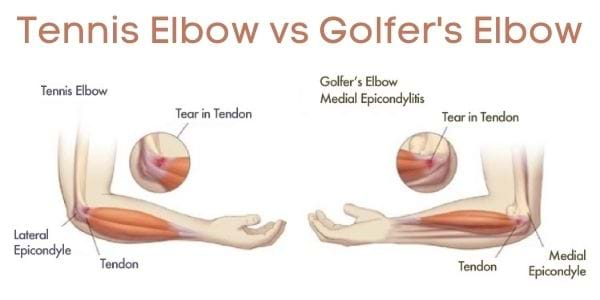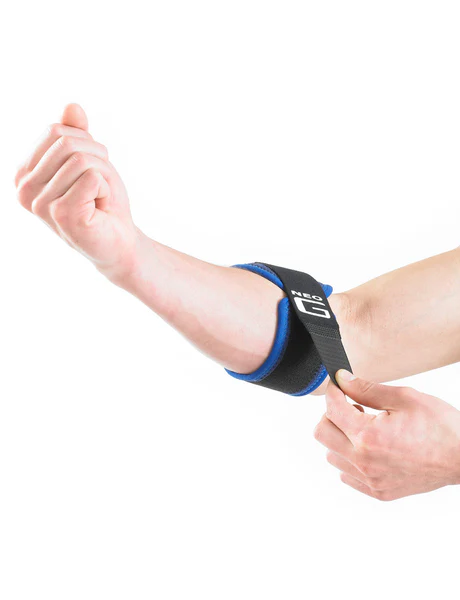Tennis Elbow and Golfers Elbow
Tennis Elbow vs. Golfer's Elbow: Causes, Symptoms, and
Treatments
Discover the differences between Tennis Elbow (lateral
epicondylitis) and Golfer's Elbow (medial epicondylitis), including their
causes, symptoms, and treatment options. Learn how to alleviate pain and
inflammation in these overuse conditions affecting the elbow and forearm.
Tennis Elbow vs. Golfer's Elbow: Causes, Symptoms, and
Treatments
Tennis Elbow and Golfer's Elbow are distinct conditions
affecting the elbow and forearm, resulting from overuse of the arm. Despite
their similar names, they involve different tendons and occur on opposite sides
of the elbow.
Tennis Elbow (Lateral Epicondylitis)
Tennis Elbow, or lateral epicondylitis, is characterized by
pain and inflammation on the outer side of the elbow. It can affect individuals
regardless of whether they play tennis. Overuse and repetitive movements of the
forearm, particularly during wrist extension and forearm rotation, can irritate
or damage the extensor tendons attached to the lateral epicondyle.
Common Causes and Symptoms of Tennis Elbow
- Causes:
Playing racquet sports, excessive computer use, painting, carpentry, or
any repetitive wrist extension and forearm rotation activities.
- Symptoms:
Pain and tenderness on the outer side of the elbow, weakened grip
strength, exacerbated pain during activities stressing the affected
tendons.
Golfer's Elbow (Medial Epicondylitis)
Golfer's Elbow, or medial epicondylitis, presents with pain
and inflammation on the inner side of the elbow. Similar to Tennis Elbow, it
can affect anyone, not just golfers. It occurs due to repetitive use of the
flexor tendons attached to the medial epicondyle.
Common Causes and Symptoms of Golfer's Elbow
- Causes:
Golf, throwing sports, weightlifting, repetitive gripping motions, and
activities involving wrist flexion and forearm rotation.
- Symptoms:
Pain and tenderness on the inner side of the elbow, weakness in gripping,
exacerbated pain during activities stressing the affected tendons.
Treatment for Tennis Elbow and Golfer's Elbow
- Rest:
Avoiding activities that exacerbate symptoms.
- Ice:
Applying ice to reduce inflammation.
- NSAIDs:
Taking nonsteroidal anti-inflammatory drugs for pain relief and
inflammation reduction.
- Hand
Therapy: Engaging in specific exercises to stretch and strengthen
forearm muscles.
- Braces/Straps:
Wearing a brace or forearm strap to alleviate strain on the affected
tendons.
- Corticosteroid
Injections: Administered if inflammation is severe and not responding
to conservative treatment.
- Surgery:
Considered in rare cases where other treatments have failed.
Early diagnosis and appropriate treatment are
crucial for successful recovery and preventing chronic issues in both
conditions. Seek medical evaluation from a Hand Therapist or orthopedic
specialist if experiencing persistent elbow pain


